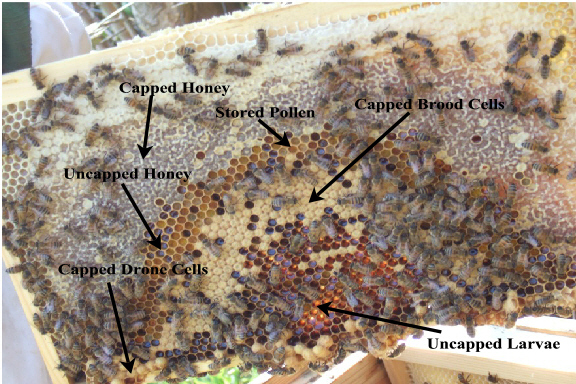<p>Honey Bee Products<br />
Honey: In the hive the bees use their honey stomachs to ingest and process the nectar a number of times. It is then stored in the honeycomb. Nectar is high in both water content and natural yeasts which, unchecked, would cause the sugars in the nectar to ferment. After the final regurgitation, the honeycomb is left unsealed – bees inside the hive “fan” their wings creating a strong draft across the honeycomb. This enhances evaporation of much of the water from the nectar. The reduction in water content, which raises the sugar concentration, prevents fermentation. Ripe honey, as removed from the hive by the beekeeper, has a long shelf life and will not ferment.<br />
Beeswax: Worker bees of a certain age will secrete beeswax from a series of glands on their abdomen. They use the wax to form the walls and caps of the comb. When honey is harvested, the wax can be gathered to be used in various wax products like candles and seals.<br />
Pollen: Bees collect pollen in the pollen basket (a concave area on the hind legs of the bee with special hairs to hold the pollen in place) and carry it back to the hive. In the hive, pollen is used as a protein source necessary during brood-rearing. In certain environments, excess pollen can be collected from the hive. It is often eaten as a health supplement.<br />
Propolis: Propolis (or bee glue) is created from resins, balsams and tree saps. Honeybees use propolis to seal cracks in the hive.</p>
<p>[From The National Honey Board – www.honey.com]</p>

